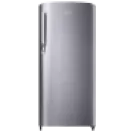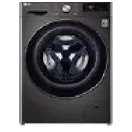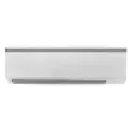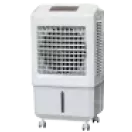A
geyser maintenance checklist ensures that your water heater operates efficiently and lasts longer. Regular tasks like flushing the tank, descaling the heating element, and inspecting the anode rod help prevent limescale build-up and corrosion. Checking for leaks, monitoring water pressure, and testing the thermostat to ensure safe and consistent performance. Following a structured maintenance checklist helps avoid costly repairs, improves energy efficiency, and ensures that your geyser delivers reliable hot water whenever needed.
Preventative maintenance on hot water heaters
- Flush the tank regularly: Sediment buildup in water heaters can reduce efficiency. For kitchen geysers, flushing the tank every 6 months prevents blockages and ensures consistent water flow.
- Inspect the anode rod: Check the sacrificial anode rod periodically, as it protects the tank from corrosion. Replace it if it is worn out to prolong the geyser’s lifespan.
- Clean the heating element: In electric water geysers, descaling the heating element is essential to prevent limescale buildup, which can reduce heating efficiency and increase energy consumption.
- Check for leaks: Regularly inspect for leaks around the tank, pipes, and valves to prevent water damage and identify minor issues before they escalate.
- Test the thermostat: Ensure that the thermostat is working correctly and set to an optimal temperature to balance energy efficiency and safety.
- Monitor water pressure: Excessive water pressure can damage the tank and components. Installing a pressure-reducing valve ensures safe and smooth operation.
Annual maintenance tasks
- Flush the tank: Drain and flush the water heater tank annually to remove sediment buildup, ensuring efficient heating and reducing energy consumption.
- Inspect the anode rod: Check the anode rod for corrosion. Replace it if it is worn out to protect the tank from rust and extend its lifespan.
- Descale the heating element: For areas with hard water, descale the heating element to prevent limescale deposits that reduce heating efficiency.
- Test the pressure relief valve: Ensure the pressure relief valve functions properly to prevent excessive pressure buildup and avoid potential leaks or damage.
- Check for leaks and corrosion: Inspect all connections, pipes, and the tank for signs of leaks or rust to prevent water damage and costly repairs.
- Evaluate the thermostat: Test and adjust the thermostat to maintain the optimal water temperature for energy efficiency and safety.
- Inspect electrical and gas connections: For electric and gas water heaters, check connections to ensure that there are no faults or leaks that could cause malfunction.
Monthly maintenance tasks
- Check for leaks: Inspect the water heater tank, pipes, and valves for any signs of leaks or moisture to prevent potential water damage and ensure smooth operation.
- Monitor water temperature: Verify the water temperature and adjust the thermostat if needed. This prevents overheating and helps maintain energy efficiency.
- Inspect the pressure relief valve: Test the pressure relief valve monthly to ensure it functions properly, preventing excess pressure buildup inside the tank.
- Clean the exterior: Wipe down the outer surface of the geyser to keep it free of dust and dirt, ensuring the appliance remains in good condition.
- Check for unusual noises: Listen for any popping or rumbling sounds, which could indicate sediment buildup inside the tank, requiring early attention.
- Observe water flow: Ensure that the water flow is smooth and consistent. Any reduction may signal sediment accumulation or blockages in the pipes.
When to seek professional maintenance
You should seek professional maintenance when your water heater shows signs of reduced efficiency, such as inconsistent water temperature, slow heating, or unusual noises. Leaks, rust, or visible limescale buildup are clear indicators that the appliance needs expert attention. If the pressure relief valve malfunctions or there are electrical or gas connection issues, immediate servicing is essential. Regular professional checks ensure safe operation, prevent costly repairs, and extend the lifespan of your water heater.
However, if you are looking to buy a new water heater, you can visit one of our partner stores, select the geyser of your choice and convert the cost into Easy EMIs. You can choose to repay it in a convenient tenure of up to 60 months. This financing solution from Bajaj Finserv is available on 1 million products.
Explore water heaters on Easy EMI with Bajaj Finserv
Discover a wide range of
20-litre geysers on
Bajaj Mall, designed to meet the unique needs of every household. These water heaters come with advanced features like energy-efficient heating, anti-corrosion tanks, and multiple capacity options, ensuring a reliable and seamless hot water experience. With Easy EMI options offered by Bajaj Finserv, upgrading your home with a new water heater is simple, affordable, and hassle-free.
Benefits of shopping with Bajaj Finserv financing options
- Affordable pricing: Access competitive prices on water heaters through Bajaj Finserv partner stores.
- Easy EMIs: Bajaj Finserv’s financing options make purchasing a water heater convenient and budget-friendly.
- Zero down payment: Selected models are available with no upfront costs, easing your purchase process.
- Wide selection: Choose from a variety of water heaters tailored for kitchen, bathroom, and household needs.
- Exclusive offers: Avail exciting cashback deals and special discounts when.
- Complimentary delivery: Enjoy free home delivery on eligible models, ensuring a smooth and hassle-free shopping experience.











